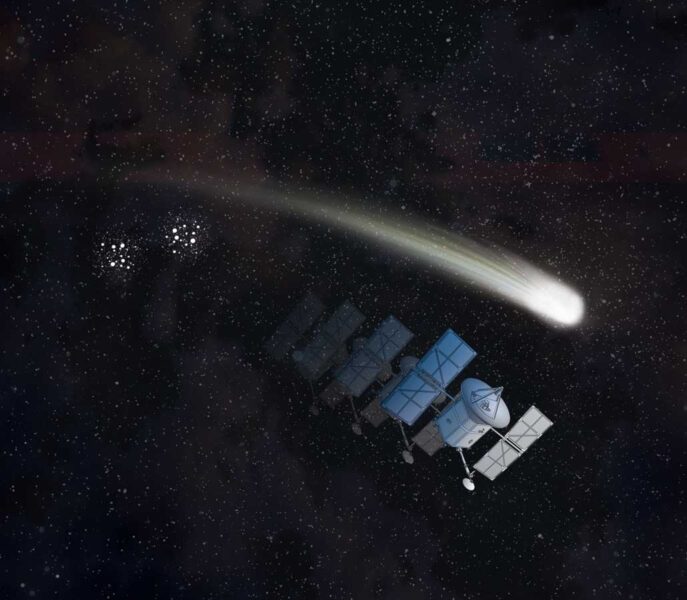It’s time to visit a body from another star system — without leaving ours.

Everything we think we know about the universe beyond our solar system has come from photons and a few grains of interstellar dust. But that near-complete material isolation is about to end. Our system apparently buzzes with objects from elsewhere in the galaxy. It’s time to go out and meet one.
The existence of extraterrestrial comets isn’t a surprise. We’ve known for decades that, unless there’s something seriously wrong with our ideas about planet formation, they must exist. Building planets through gravitational accretion is messy. Planet assembly should be causing a constant exodus of bodies loosed from the grip of their home stars. If anything, it seemed a little strange that we hadn’t seen something hurtling in from elsewhere in the galaxy.
That changed in late 2017 when we detected the bizarre extrasolar object ‘Oumuamua whipping through our solar system (S&T: Oct. 2018, p. 20). We didn’t get a very good look, and ‘Oumuamua was just so weird — cigar-thin and seemingly accelerating mysteriously — that it didn’t necessarily call out, “I’m a typical interstellar wanderer and there are many just like me.”
Now a second one has turned up. Found by Crimean amateur astronomer Gennady Borisov on August 30th, 2I/Borisov is already sporting a bit of a coma, so it seems much more like a “typical” comet. Two objects detected in a short interval implies many more.
Could we launch a mission to intercept 2I/Borisov and do a close flyby or even grab a sample? There isn’t time. These things come in and fly off fast, far too fast to be in permanent orbit around the Sun. But there will be more. The trick is to build and launch a spacecraft — a small and very fast spacecraft — that will be ready to spring into action when we spy another such interloper on a trajectory we can reach.
This is not how we usually do things: constructing a spacecraft when we haven’t even found the target. But the merits of the approach became clear with the recent success of New Horizons at 2014 MU69, also known as Ultima Thule (S&T: July 2019, p. 10). That was a fantastically rewarding encounter with a body that we hadn’t discovered at the time of launch.
The European Space Agency’s recently selected Comet Interceptor mission has this philosophy. It will wait in a stable orbit and then shoot off toward a suitable long-period comet. These are hard to catch, because once detected they quickly fly through the inner solar system and back out into the dark. Such an approach will be even more crucial for interstellar comets, which come in even faster.
It has to be done, though, and if one of the national space agencies doesn’t take it on, it’s a great opportunity for a zillionaire philanthropist to make history with a theatrical and scientifically rich exploration first.
Just think: We can touch “other” star stuff. What are we waiting for?
This article originally appeared in print in the January 2020 of Sky & Telescope.
 0
0
Comments
You must be logged in to post a comment.